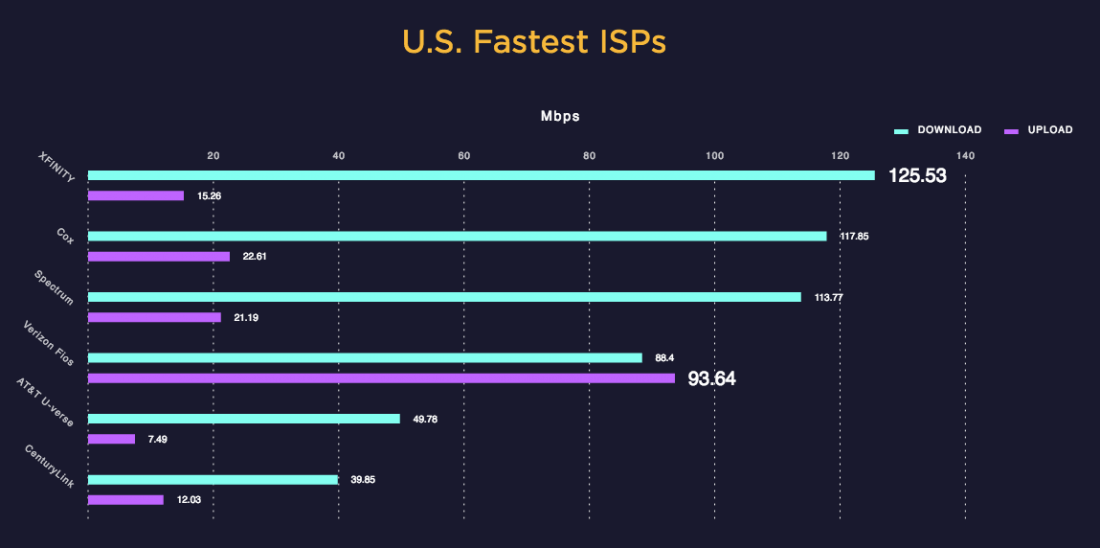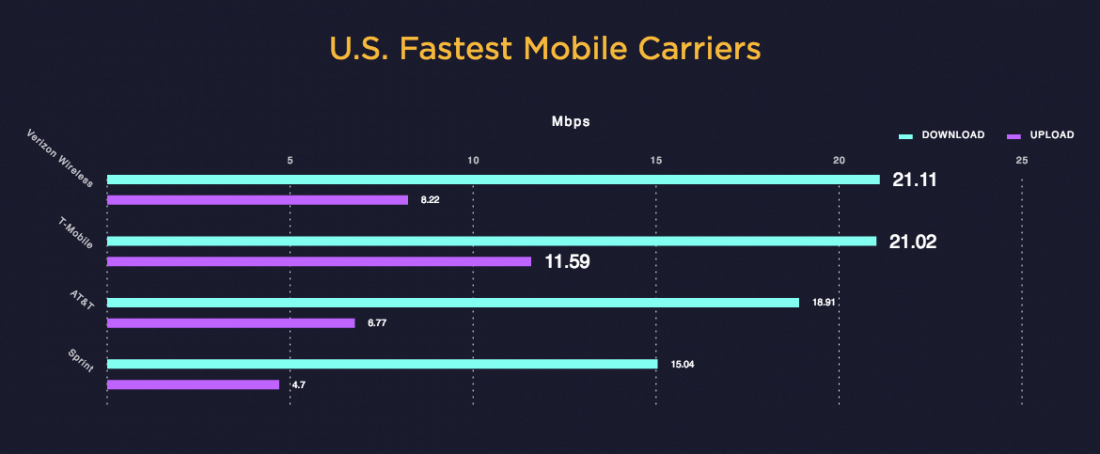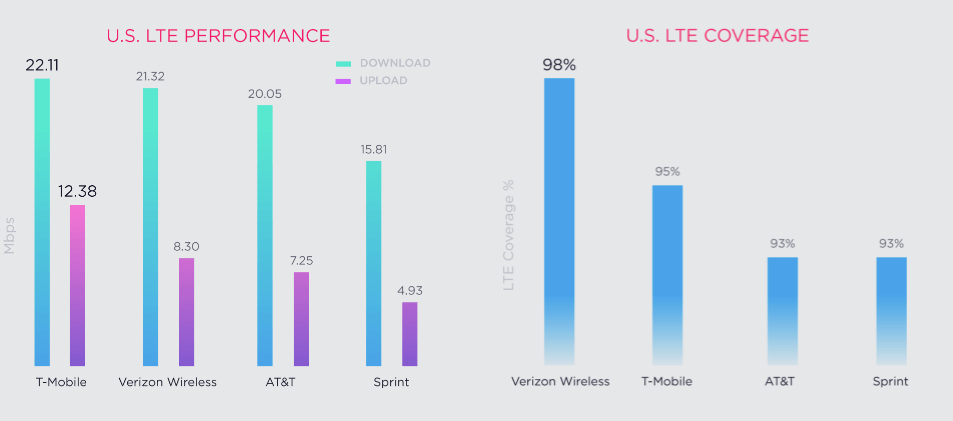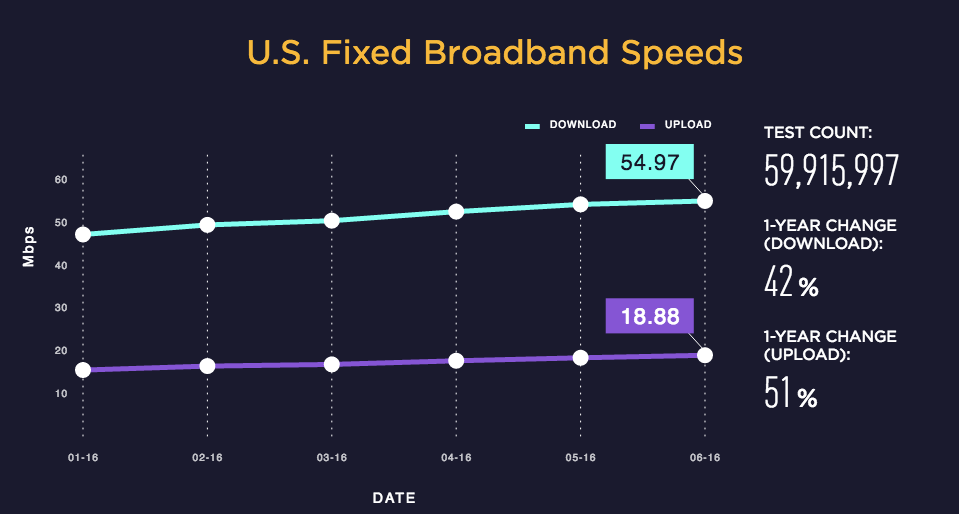Speedtest has published a new report on the state of fixed and mobile broadband speeds across the U.S. The data covers the first six months of 2016 and there's actually some bit of good news there: Overall, the fixed broadband industry has seen consolidation, speed upgrades and growth in fiber optic deployments, while mobile internet customers have also seen performance gains of over 30% compared to the same period a year ago.
The typical fixed broadband consumer in the U.S. saw average download speeds greater than 50 Mbps for the first time ever during the first six months of 2016, topping out at 54.97 Mbps in June. This represents a year-on-year increase in download speeds of 42%, while upload speeds also grew 51% with an average of 18.88 Mbps.

In terms of individual ISPs, Comcast's XFINITY and Cox Communications offer the fastest download speeds with an average of 125.53 Mbps and 117.85 Mbps, respectively. The newly-created Spectrum, born from the merger of Charter Communications, TWC and Bright House Networks, was a close third with average download speeds of 113.77 Mbps.
While Verizon's Fios falls squarely in the middle of the ranking for average download speeds, unlike rival services Fios puts a special emphasis on creating symmetric links, to make the upload just as fast as the download speed. With average upload speeds of 93.64 Mbps, it was by far the fastest in this area – almost five times as fast than competitors.

When it comes to mobile broadband both T-Mobile and Verizon are virtually tied for average download speeds at 21.02 Mbps and 21.11 Mbps, respectively. When comparing upload performance, T-Mobile was 40% faster than any of the other major carriers at 11.59 Mbps.
Coverage is just as important and in that regard Verizon takes the top spot with 98% of test samples from LTE-capable devices taking place on their LTE network, T-Mobile came in second at 95%, followed by AT&T and Sprint tied at 93%.

Speed and coverage for both fixed and mobile broadband will vary depending on which city and state you happen to be, you can check out this data on Speedtest's report too.
Overall the report concludes that fixed and mobile internet performance has taken a big step in the right direction in the U.S. However, current speeds in the U.S. are still much slower than what many other countries receive, and according to a a recent Broadband Progress Report released by the FCC, 10% of Americans lack access to the FCC target speeds of 25 Mbps download and 3 Mbps upload. This number increases to 39% when looking at rural populations. Only 4% of urban Americans lack access to boradband speeds, however.
